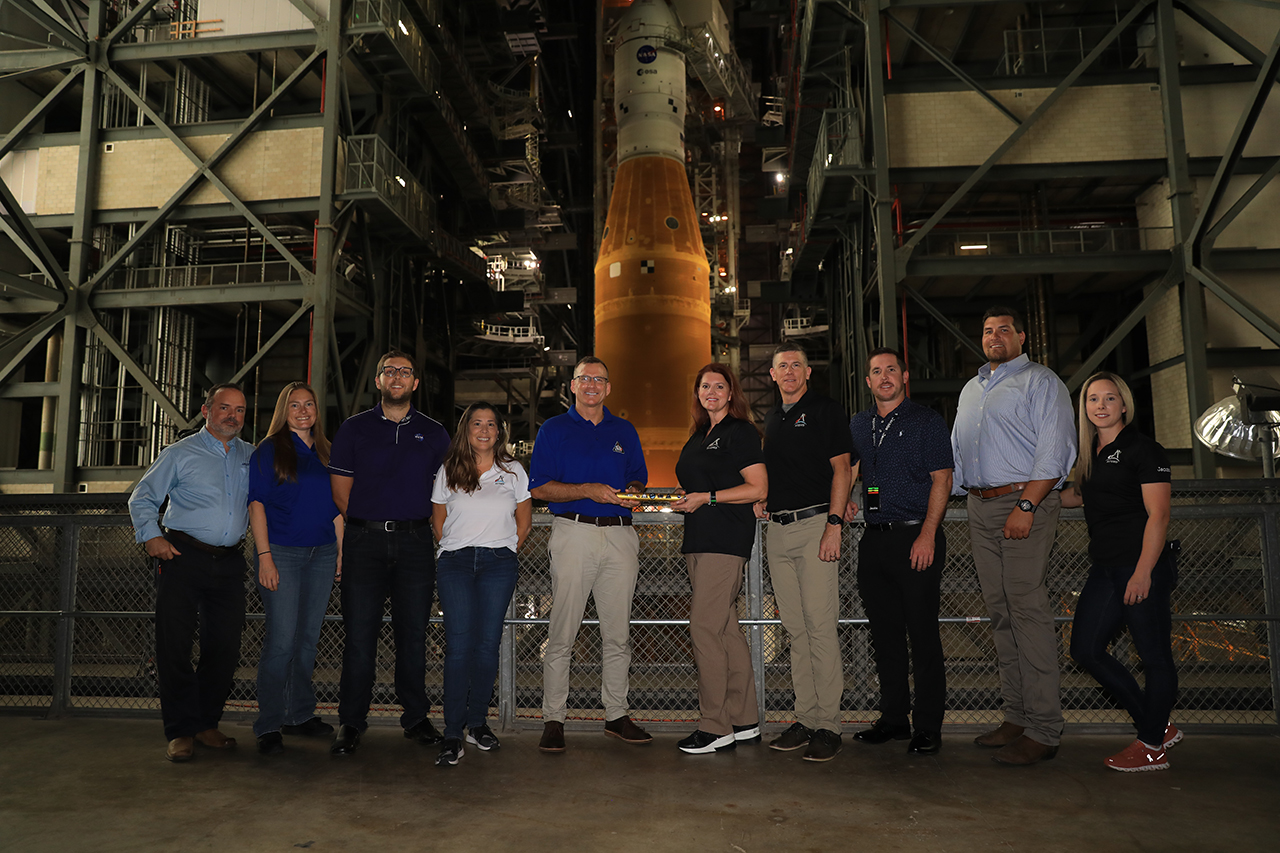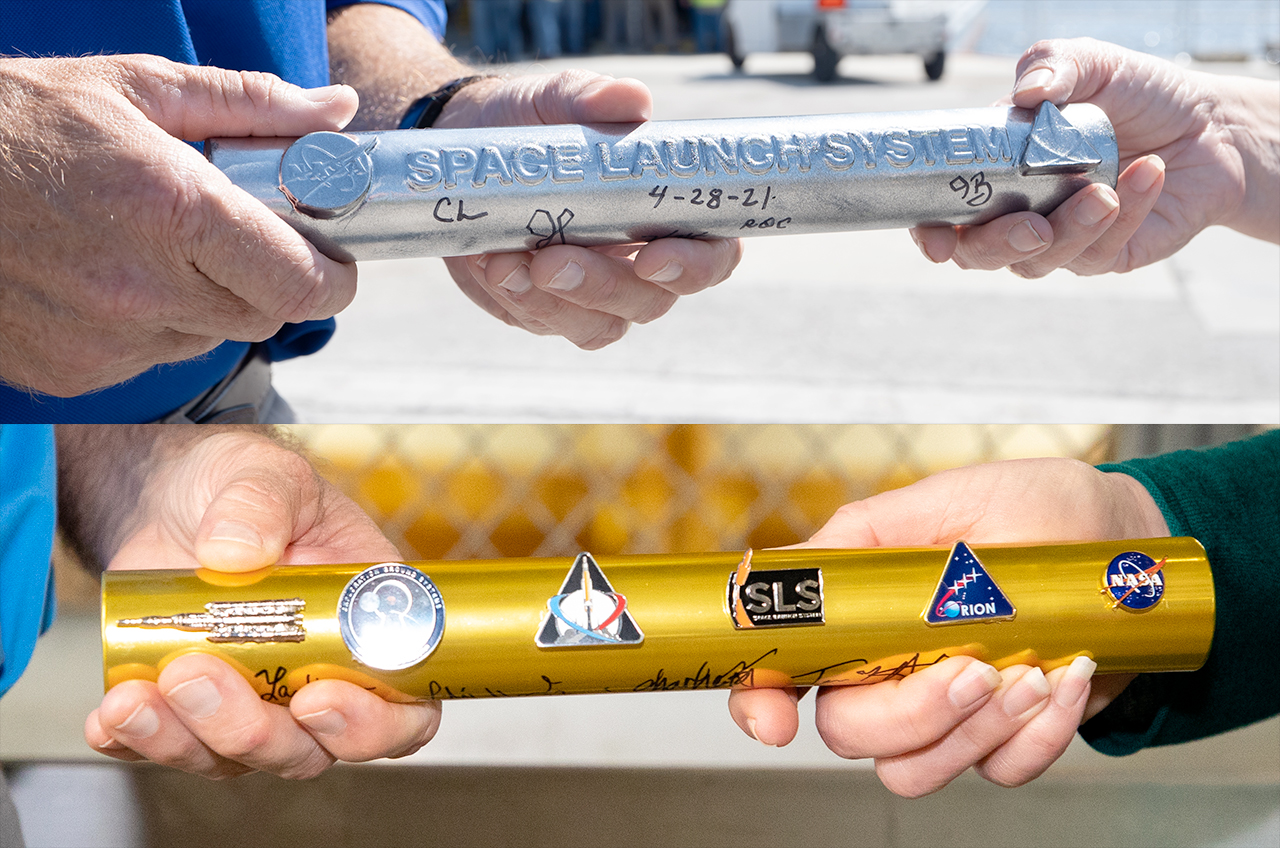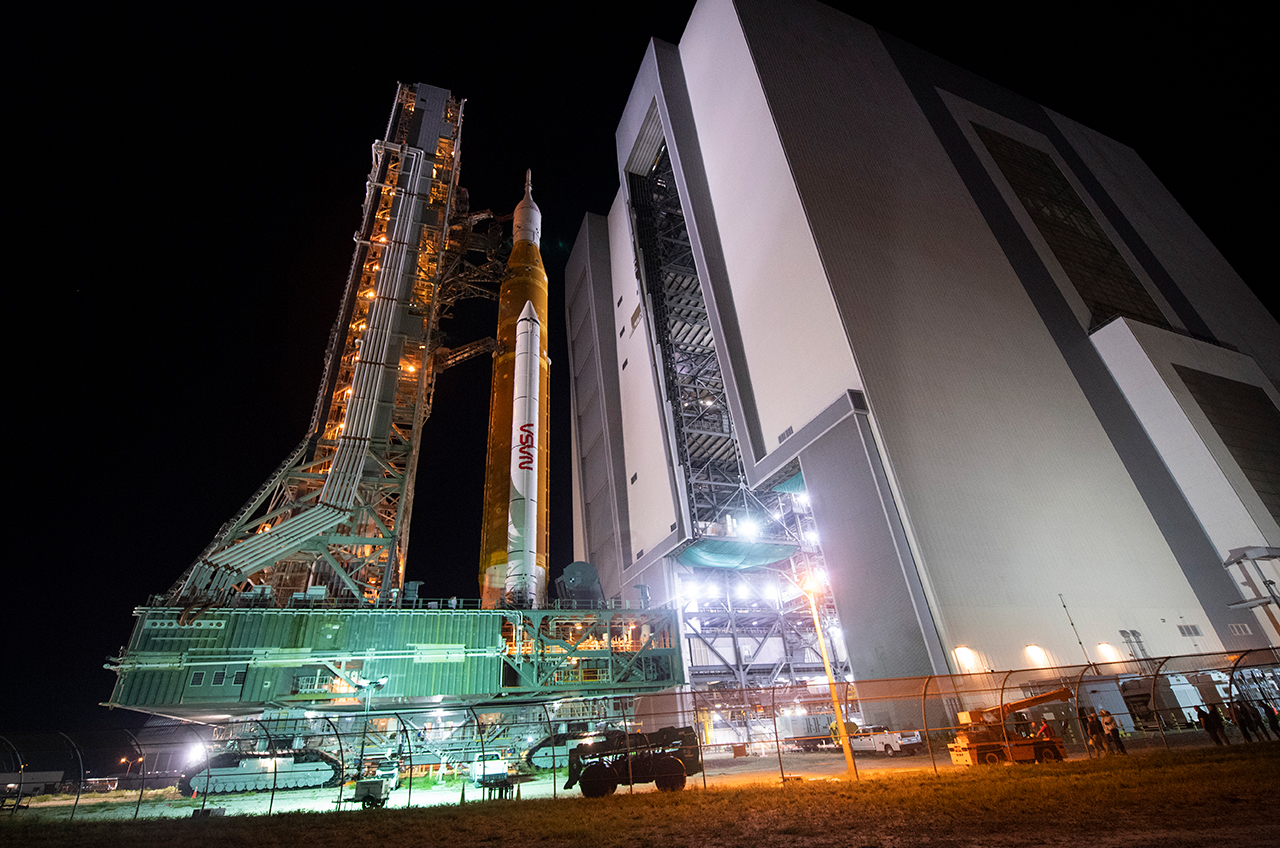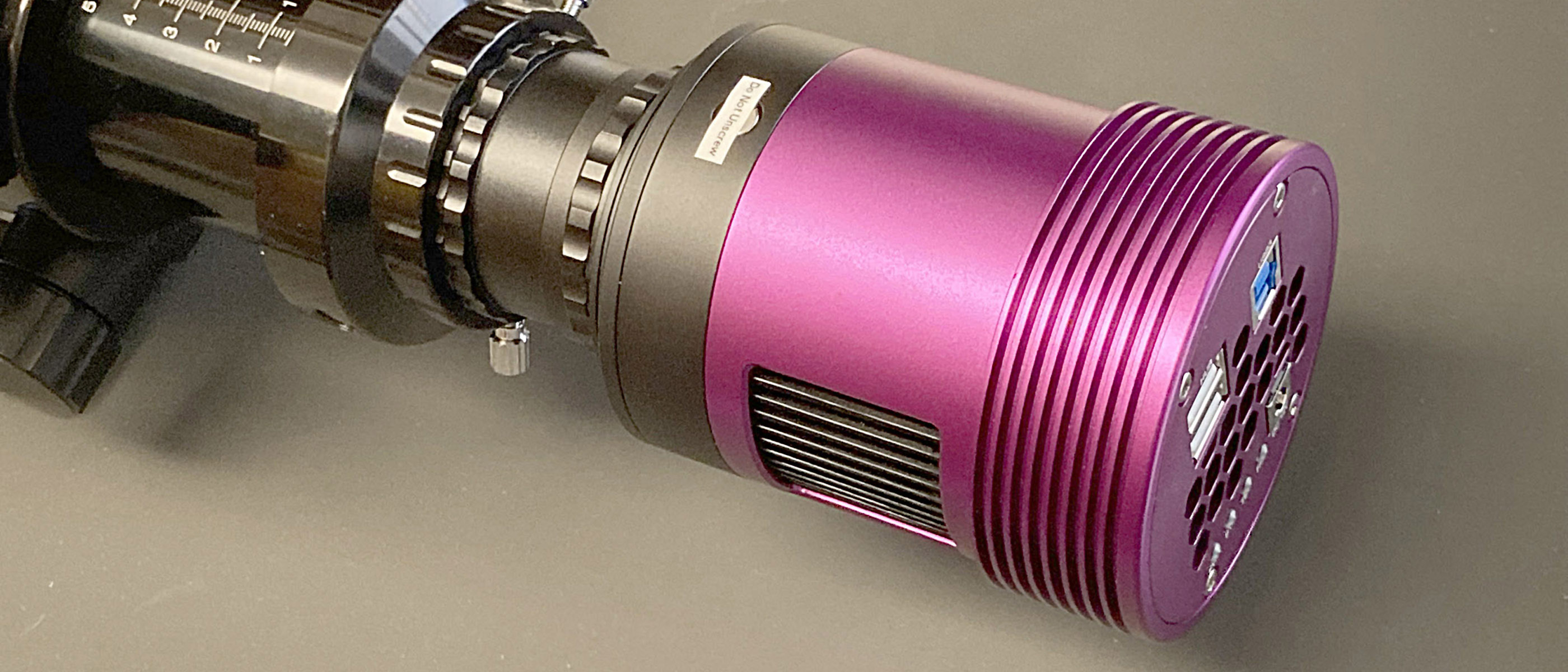Symbolic baton rides with NASA Artemis 1 rocket on rollout for launch
The baton passing is a new NASA tradition created for the Artemis 1 mission.

A small metal rod joined NASA's new moon-bound rocket for an overnight move to the launch pad on Tuesday (Aug. 16), serving as a symbolic marker for the milestone event.
The logo-adorned golden baton was handed off by the Artemis 1 launch team to the crew driving the crawler-transporter carrying the Space Launch System (SLS) booster and Orion spacecraft to Launch Complex 39B at NASA's Kennedy Space Center in Florida. Unlike the rocket, which, barring any problems, was making a one-way trip, the rod was set to return to the Vehicle Assembly Building (VAB) to then follow the mission from the ground.
"We created a small memento," said Cliff Lanham, senior vehicle operations manager for NASA's Exploration Ground Systems (EGS) program at Kennedy, in response to a question from collectSPACE.com. "We gave it to the crawler team, so they will be taking that out with them."
Related: NASA's Artemis 1 moon mission: Live updates
More: NASA's Artemis 1 moon mission explained in photos

The crawler, carrying the baton and topped with a mobile launcher, SLS and Orion, began the 4.2-mile (6.8 kilometers) trip to the pad at 9:55 p.m. EDT on Tuesday (0155 GMT on Wednesday). Traveling at a maximum speed of 0.8 mph (1.3 kph), the rollout was completed on Wednesday (Aug. 17) at 8:03 a.m. EDT (1203 GMT) after 10 hours and 8 minutes.
The transporter will next return to the VAB, where the SLS components and Orion were stacked.
"I'll get the baton back when we're back in the VAB," Lanham said, "and then once we're ready to go for launch, we'll pass it back off, handing it off to recovery."
Get the Space.com Newsletter
Breaking space news, the latest updates on rocket launches, skywatching events and more!
Tuesday night's trip was at least the second time that a similar baton made the trip with the crawler. Another golden rod was also on board the tracked transporter for the SLS' first trip out to Pad 39B, ahead of NASA's first attempt at performing a wet (or fueled) dress rehearsal in March. The test was completed in June, on the fourth try after a return to the VAB for repairs.

Prior to that first rollout, Lanham presented the baton to launch director Charlie Blackwell-Thompson. She will oversee the Artemis 1 countdown from inside Firing Room 1 in the Launch Control Center (LCC), located adjacent to the VAB.
Blackwell will again be handed a baton before the launch, targeted for as soon as Aug. 29, to have it with her team of flight controllers in the LCC. It will then be given to the NASA and U.S. Navy recovery team, which will retrieve the Orion capsule from the Pacific Ocean after it splashes down from the moon at the mission's end.
The foot-long (30.5 centimeters) baton is decorated with lapel pins, including five displaying the insignia for NASA, Orion, SLS, Exploration Ground Systems and Artemis 1. A last pin is in the shape of the SLS topped with Orion.
A small rock fragment retrieved from the crawlerway after a previous rollout is also affixed to the baton. The metal rod was signed by Lanham, Blackwell-Thompson and other members of the EGS and Artemis launch teams.
The baton is at least the third such memento created to mark Artemis 1 milestone events. An even earlier rod, similar in length but silver in color, was handed off by SLS stages manager Julie Bassler to Lanham in April 2021, when the SLS core stage arrived at Kennedy from Stennis Space Center in Mississippi.
"Like in a track relay, this handoff signifies the last leg of our assembling of the Artemis 1 SLS rocket, bringing us one step closer to launch," officials posted to NASA's Artemis Twitter account on April 29, 2021.
That baton featured raised metal shaped in the form of NASA's insignia and the Artemis 1 logo, together with "Space Launch System." Lanham and Bassler both initialed the rod as part of its handoff.

The Artemis 1 mission marks the first integrated test of the Orion, SLS and ground systems at Kennedy Space Center. An uncrewed flight test, Artemis 1 will provide the data needed for future flights to launch astronauts to the moon and eventually on to Mars.
The passing of the baton is a new tradition at NASA, started for Artemis 1. It is similar, though, to other symbolic activities practiced during earlier U.S. missions, including the exchange of flags and banners, as well as the carrying of philatelic covers (stamped and cancelled envelopes) on milestone moves and the flight of dollar bills.
collectSPACE.com is grateful to film and TV company Haviland Digital for supporting our Artemis 1 coverage. Their team has produced and supported titles such as the award-winning "Last Man on the Moon," "Mission Control: The Unsung Heroes of Apollo" and "Armstrong."
Follow collectSPACE.com on Facebook and on Twitter at @collectSPACE. Copyright 2022 collectSPACE.com. All rights reserved.
Join our Space Forums to keep talking space on the latest missions, night sky and more! And if you have a news tip, correction or comment, let us know at: community@space.com.

Robert Pearlman is a space historian, journalist and the founder and editor of collectSPACE.com, a daily news publication and community devoted to space history with a particular focus on how and where space exploration intersects with pop culture. Pearlman is also a contributing writer for Space.com and co-author of "Space Stations: The Art, Science, and Reality of Working in Space” published by Smithsonian Books in 2018.In 2009, he was inducted into the U.S. Space Camp Hall of Fame in Huntsville, Alabama. In 2021, he was honored by the American Astronautical Society with the Ordway Award for Sustained Excellence in Spaceflight History. In 2023, the National Space Club Florida Committee recognized Pearlman with the Kolcum News and Communications Award for excellence in telling the space story along the Space Coast and throughout the world.











